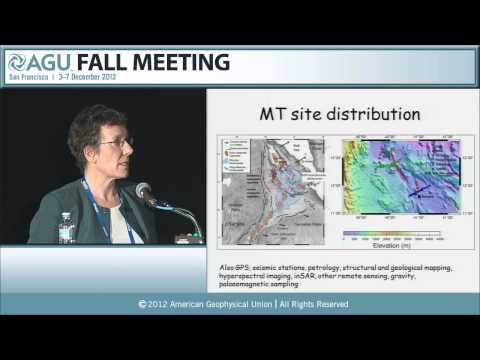Description:
Explore the magnetotelluric method and its applications in East African rift studies through this comprehensive Bullard Lecture from the 2012 AGU Fall Meeting. Delve into the principles of magnetotellurics, including passive magnetic field sources, equipment deployment, and data processing techniques. Examine case studies from Ethiopia, focusing on the northern Main Ethiopian rift and ongoing research in Afar, to understand how magnetotellurics aids in imaging subsurface partial melt and magma. Learn how interdisciplinary approaches enhance interpretation, combining magnetotelluric results with complementary datasets to provide insights into magmatic and tectonic processes. Gain knowledge on topics such as resistivity distributions, inverse problem complexities, and the integration of geophysical and geochemical data in rift studies.

Magnetotelluric Studies in East Africa: Imaging Subsurface Melt and Magma
Add to list
#Science
#Earth Science
#Geophysics
#Geology
#Geochemistry
#Seismology
#Computer Science
#Information Technology
#Data Management
#Data Integration
#Subsurface Imaging